SICK is setting new standards in dust measurement with its rugged and low-maintenance measuring devices for detecting and monitoring dust concentrations. All dust measuring devices are easy to integrate into existing applications – and offer straightforward installation and commissioning along with user-friendly operation.

Monitoring of particles in emissions and room air
Sustainable protection of the environment relies on the detection and accurate measurement of dust and particle emissions. This is because dust particles, especially from industrial plants, have a significant impact on people and natural areas. The monitoring of particles in room air is also becoming increasingly important. With its comprehensive product portfolio for small to large measuring ranges and gas duct diameters, SICK offers suitable solutions even for difficult measuring tasks, such as dust measurement in wet gases. Of course, suitability-tested devices and those with automated testing of zero and reference point are also available. In some devices, features such as contamination monitoring or automated self-alignment can be selected, which round out the outstanding features of dust measuring devices from SICK.
Measurement of dust
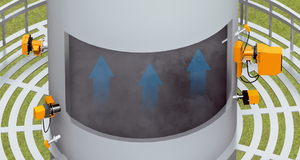
Impact of particle properties on the measurement
For reliable and accurate measurement of dust and particle concentrations, numerous boundary conditions must be taken into account, e.g. a suitable measuring point. This is important in order to obtain representative results. Gas velocities and flow conditions must also be considered. The properties of the particles, their concentration as well as the gas humidity play an important role in the selection of an appropriate measurement principle. And finally, the process and ambient conditions must be taken into account: Is the measurement medium corrosive? At which temperatures does the measurement take place? Which particles are prevalent in the process? These and other criteria require many years of experience in selecting the right measurement technology.

Scattered light and transmittance
Depending on the boundary conditions, scattered light or transmittance measurement can be more suitable for detecting dust concentrations. With the transmittance measurement principle, the measurement is based on the attenuation of a light beam by the light absorption of the particles (1). With the scattered light measurement principle, there are two options to choose from: With backward scattering, the light reflected from the particles is measured (2). In forward scattering, the radiation scattered by refraction (3) or diffraction (4) in the forward direction (5) of the incident light serves as the measurand. SICK offers all of these measurement principles in its dust measuring devices in order to be able to optimally satisfy the different requirements of measuring tasks.
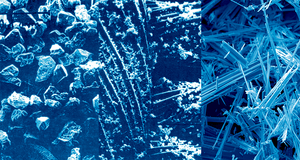
Particle propertiesDust is a collective term for particulate or fibrous particles. The dust composition can be relatively uniform, as with coal dust, or very heterogeneous, as with household dust. This is a mixture of numerous substances: Dander, hair, fibers, lint, rock particles and much more. Dust particles can therefore differ greatly in size, shape, color, material, density and specific properties, such whether they are as abrasive or sticky.
SICK has the right solution for your dust measuring needs.
Scattered light measurement

The right choice for small concentration of dust – scattered light measurement from SICK
In scattered light measurement, the radiated light is scattered by the particles in the gas mixture and detected by a sensitive receiver. Due to its high sensitivity, the scattered light principle is especially suitable for low dust concentrations, even below 1 mg/m³. Depending on the system-specific requirements and particle properties, either forward or backward scattering can be used. Both measurement principles return stable and reproducible measurement results, regardless of the gas velocity, humidity, or dust particle charges. As one of the leading manufacturers of dust measuring devices, SICK supplies measuring devices with both forward and backward scattering.
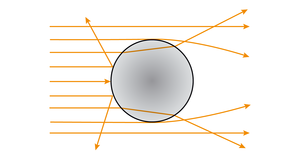
Benefits of forward and backward scattering
With the backward scattering measurement principle, light is irradiated into the measurement duct and the radiation reflected by particles is measured. It is suitable for larger gas ducts and delivers representative measurement results, even with inhomogeneous dust distributions. Background suppression eliminates disturbing scattered light from other sources.
In forward scattering, the dust measuring device measures the light scattering from the particles in the direction of diffusion of the measuring light beam. The measurement takes place in the gap of a measuring probe in the gas duct. Due to the smaller measuring volume, this measurement principle is also suitable for gas duct diameters below 0.5 m.
Both processes are suitable for low to very low dust concentrations. Another advantage is that the devices only have to be mounted on one side of the gas duct.

Measurement in wet gasesFor accurate dust measurement in moist gases, the particles contained in the gas must be dried, since water adhering to the particles falsifies the measurement. The device extracts a partial gas flow from the gas duct with an extraction probe. This means the measurement is independent of the gas velocity in the gas duct. First, a thermal cyclone dries the particles contained in the gas. Then the dust concentration is measured. Forward scattering is used here, as it requires only a small measurement volume. The partial gas flow is conveyed via an ejector without moving parts. This means the measurement is very low-maintenance. In the case of salt solutions in the gas, such as in the fertilizer industry, optional backflushing further reduces the amount of maintenance work needed.
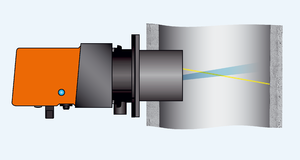
Light scattering on particles
A sender emits light into the measurement duct, which is scattered by the particles in the gas mixture and detected by a sensitive receiver. The area where the transmitted beam and the receiver field of view overlap defines the measurement volume in the gas duct. The measured scattered light intensity is proportional to the dust concentration and independent of the measuring distance. However, the scattered light intensity depends not only on the number and size of the particles, but also on their optical properties. For exact measurement of the dust concentration, the measurement system must therefore be calibrated.
Transmittance measurement

Reliable measurement at high dust concentrations and inhomogeneous media – transmittance measurement technology from SICK
Transmittance measurement technology detects light attenuation by dust particles. Transmittance dust measuring devices are well suited for medium to high dust concentrations and large gas duct diameters. Fields of application are emission and process monitoring as well as room air monitoring. The measuring devices measure over the entire gas duct diameter, which partially compensates for inhomogeneities in the particle distribution. This leads to a very representative measurement result. The devices do not protrude into the gas duct and thus have no direct contact with aggressive process gases. An optional contamination correction function compensates for the gradual soiling of the optical faces. The measurement results can be output as dust concentration or in transmittance, absorbance and opacity.

Transmittance measurement principle
The transmittance measurement shines light through the mixture of gas and particles, the intensity of which is weakened by the particles. The more particles there are in the light beam, the stronger the light attenuation. The measuring device compares the intensity of the received attenuated light with that of the emitted unattenuated light. From this, the device calculates the transmission as well as the absorbance. The absorbance is proportional to the dust concentration. In transmittance measuring devices from SICK, the light from the sender is reflected back to a highly sensitive receiver by a reflector opposite it. This doubles the measuring distance and the sensitivity of the measuring device.
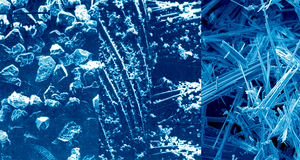
Influence of particle properties
Compared to scattered light measurement, the particle properties have a smaller influence on the transmittance measurement. However, the particle size has a significant impact. That is why this measurement requires calibration to provide accurate results. The cross-duct solution from SICK used in transmittance measurement compensates for problems caused by inhomogeneous particle distributions in the gas duct, as the measurement beam runs across the entire duct. When designing its measuring devices, SICK draws on its extensive application knowledge and many years of experience.

Gas duct diameter
SICK provides measurement technology for all common gas duct diameters, from small gas ducts with 0.5 m diameter to large gas ducts with 50 m diameter. Especially with large gas ducts, lateral wind pressure or temperature differences can easily lead to deformation of the gas duct. In order to prevent any resulting tilting of the optical device axis, the optional “Automated self-alignment” device function monitors the orientation between the optical assemblies and corrects any wandering of the measuring beam. Suitable mounting flanges are available as accessories for a wide range of gas duct materials and wall thicknesses.
Dust measuring devices from SICK

Ideal solutions for your measuring task
To successfully implement a measuring task, a whole range of influences and requirements must be taken into account in addition to the selection of the best available measurement technology. The greater the accuracy and level of detail in which requirements are known and defined, the more reliable and cost-effective the implementation of the measuring task will be. This applies not only at the procurement stage, but for the entire operating time of the measurement technology. It is precisely here that SICK excels with its extensive product range and proven measuring technologies backed by decades of experience gained from many thousands of installations.
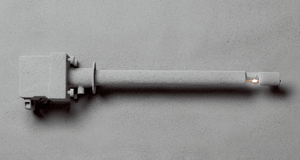
Dust concentrationFor measuring low dust concentrations up to about 200 mg/m³, the scattered light dust measuring devices of the DUSTHUNTER SB and DUSTHUNTER SP product families are the perfect choice. For concentrations above this up to about 10,000 mg/m³, DUSTHUNTER T transmittance measuring devices are the better choice. If the dust concentration varies between low and high values, e.g. with changing fuels, the DUSTHUNTER C200 dust measuring device is used. It unites transmittance and scattered light measurement in one device.
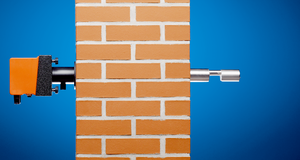
Gas duct diameterThe diameter of the gas duct in which measurements are done is an important criterion for choosing the right measuring devices. Large to very large gas ducts require measuring devices that measure in a larger volume of space so that the measurement is as representative as possible. Suitable devices for this purpose are, for example, those of the DUSTHUNTER SB product family or – in the event of very high dust concentrations – cross-duct versions of the DUSTHUNTER T product family. For small gas duct diameters, a limited measuring volume is sufficient. DUSTHUNTER SP measuring probe devices are well suited in this case.
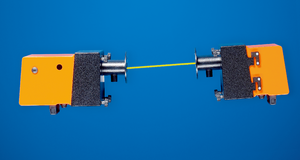
Test functionsAll dust measuring devices from SICK are equipped as standard with an automated zero and reference point check (control cycle), as required by EN 14181, for example. Devices in the medium price segment and above have an integrated contamination monitoring system for monitoring the optical faces. The devices with backward scattering – DUSTHUNTER SB50 and DUSTHUNTER SB100 – also feature automated background suppression. The DUSTHUNTER T100 and DUSTHUNTER T200 transmittance dust measuring devices score points with integrated self-alignment of the optical elements.
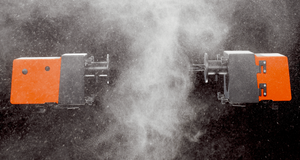
Measuring mediumFor aggressive measuring media, the non-contact scattered light measuring devices of the DUSTHUNTER SB product family or the cross-duct measuring devices of the DUSTHUNTER T product family are particularly well suited. The DUSTHUNTER T devices are also ideal for inhomogeneous measuring media, as they measure in a relatively large volume, thus delivering representative results. For humid gases, the FWE200DH extractive measuring device is the best choice, and for less problematic measuring media, the versions with measuring probe are used, namely the DUSTHUNTER SP100 or DUSTHUNTER SP30.
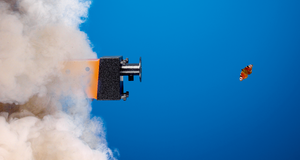
Approvals
Dust in the air is a pollutant. That is why operating entities of dust-emitting plants must reduce dust emissions – for a cleaner future. The monitoring of dust emissions from such plants is regulated by law in many countries and requires approved measurement technology. SICK therefore supplies suitability-tested dust measuring devices that comply with the current standards and regulations, for example EN 15267, EN 15859, MCERTS as well as standards of the American EPA and the Russian GOST.
Suitability-tested Ex types in accordance with 2014/34 / EU (ATEX) are available for use in potential explosion-hazardous areas.

Process temperatureAt higher temperatures, measuring devices that do not protrude into the gas duct are required, i.e. the DUSTHUNTER SB versions with backward scattering or the transmittance measuring devices of the DUSTHUNTER T product family. The DUSTHUNTER SP measuring probe types are well suited for lower temperatures. If dew point undershoots and thus humid conditions occur in the gas duct, the FWE200DH extractive dust measuring device is the perfect choice.